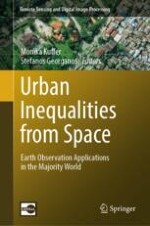2024 | OriginalPaper | Buchkapitel
8. The Impact of Respondents’ Background Towards Slum Conceptualisations and Transferability Measurement of Remote Sensing–Based Slum Detections. Case Study: Jakarta, Indonesia
verfasst von : Jati Pratomo, Karin Pfeffer, Monika Kuffer
Erschienen in: Urban Inequalities from Space
Aktivieren Sie unsere intelligente Suche, um passende Fachinhalte oder Patente zu finden.
Wählen Sie Textabschnitte aus um mit Künstlicher Intelligenz passenden Patente zu finden. powered by
Markieren Sie Textabschnitte, um KI-gestützt weitere passende Inhalte zu finden. powered by
